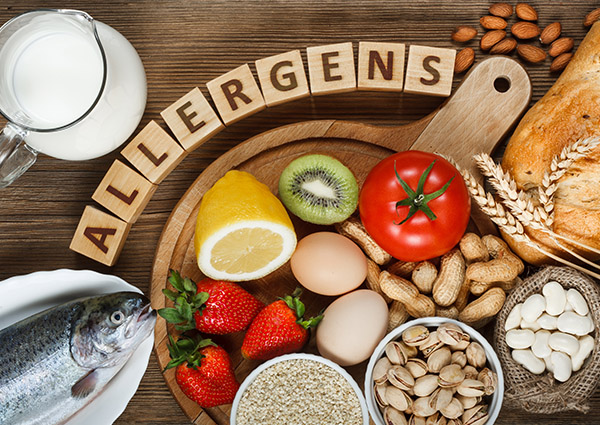
Focus On: Food Allergies
Mark Twain once said, “Part of the secret of success in life is to eat what you like and let the food fight it out inside.” Eating is one of life’s basic and best pleasures – unless you are one of the 15 million Americans with food allergies. For them, certain foods really do “fight it out inside” by kicking the immune system into overdrive, resulting in allergic reactions that can range from mildly uncomfortable to life-threatening.
The vast majority of food allergies are caused by eight commonly eaten foods: peanuts, tree nuts, fish, shellfish, milk, wheat, soy and eggs. And while allergies to milk, eggs, wheat and soy are often outgrown, peanut and tree nut allergies, as well as fish and shellfish allergies tend to be lifelong. For reasons that are not well understood, food allergies, especially in children, have risen over the past several decades, and allergies to sesame and other types of seeds have also increased.
Avoiding allergic reactions begins with knowing where those culprit foods are found; label reading becomes very important, as does knowing how food is made. Purchasing prepared food or dining out can be risky due to the possibility of cross-contamination between safe foods and allergenic foods. Many people feel the best way to avoid reactions is to prepare food at home from simple, safe ingredients.
The only way to prevent an allergic reaction is to avoid triggering foods, but accidents can happen. Recognizing allergic reactions and knowing how to treat them quickly is essential – and may be a lifesaver. Symptoms to look out for include red, blotchy, itchy skin that may contain raised bumps called hives, swelling of the lips, tongue or face, as well as vomiting or difficulty breathing. Always visit your doctor to stay informed about your allergies and keep antihistamine or prescribed epinephrine with you at all times, in case a reaction occurs. Being prepared at all times helps to alleviate the stress of living with food allergies.




